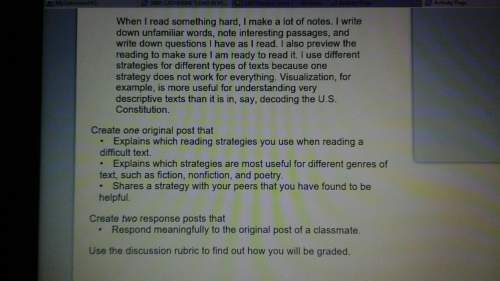
1 Passage
Developing Robot Brains
Scientists have been working on how to build robot brains that develop in the same way as human brains. In the past, scientists have tried to copy human brains exactly. The trouble is, there is still so much that scientists do not know about how human brains work. But a group of scientists at Michigan State University have developed a new plan. They are using nature as an example to follow for robots. We know that things change and adapt in nature. These scientists want to make robots that can change and adapt, too. The robots would learn to do tasks over time. The goal is to have robots with brains that develop like human brains do, over many years. One task this team of scientists worked on was to get robots to enter and exit a room. This action is easy for humans to complete, but not for robots. The scientists used a math equation to program the robots on this task. They created a program where the robots had to work on the task in connection with other robots. The robots watched each other and took on special roles for the task. This made them more successful. Then, the robot brains that worked the best on a task were the models used for future brains. This is very much like what happens in nature. A characteristic that works well for an animal gets passed on to its babies. Overall, this group of scientists thinks that following what happens in nature is the key to creating robots that can think like humans. The robot brains will start young, like humans. Robots will learn and explore for many years. Then they will develop higher intelligence and understanding. This is very much like how human brains develop!
1 Passage
Problem Solving with Peanuts and Sweet Potatoes
For years, farmers in Alabama grew cotton and nothing else. As a result, farmers had damaged fields that could no longer cultivate crops. The fields broke down from planting the same thing year after year. Then, in 1914, a pest called a boll weevil destroyed crops. The solution to this problem came from George Washington Carver, an African-American scientist and inventor. He discovered that the soil in Alabama grew peanuts and sweet potatoes well. Carver suggested that farmers grow peanuts and sweet potatoes to help the soil.
This plan worked. Farms began producing peanuts and sweet potatoes. However, not many people bought these foods. Farmers struggled to earn a living. Carver responded to this situation with more research. He wanted farmers to keep planting these crops. He experimented and made products from peanuts and sweet potatoes. Carver made 300 other things from peanuts, such as flour, milk, ink, and dye. He made about 100 products from sweet potatoes, including glue and ink. By 1940, peanuts became the second leading crop to make money in the South. Carver changed how cotton was grown and made many other crops important to the South.


Answers: 3


Another question on English

English, 21.06.2019 17:30
Read the excerpt below and answer the question. “this fair country alone is settled by freeholders, the possessors of the soil they cultivate . .” in about 100 words, discuss the influence that being a “freeholder” has on a settler and, according to crevecoeur, the admirable qualities it engenders.
Answers: 1

English, 21.06.2019 18:30
Writers try to let us know what is central to their writing. when we notice words such as "meanwhile," "afterward," "before," or "previously," an author is letting us know the order in which events happen. a paragraph that mostly uses these key words is arranged in what structural form?
Answers: 1

English, 22.06.2019 00:30
Read the excerpt from the odyssey; 'o cyclops! would you feast on my companions? puny am i, in a caveman's hands? how do you like the beating that we gave you, you d(arn)ed cannibal? eater of guests under your roof! zeus and the gods have paid you! ' according to this excerpt, odysseus (a)is fearful of the cyclops. (b)is prideful and overly confident. (c)has been weakened by the cyclops. (d)has regrets about staying on the island.
Answers: 2

English, 22.06.2019 01:50
Plagiarism quiz read both the paragraph below and the information following it that identifies the source using the american psychological association format. then read each of the numbered statements and determine if each is plagiarized or not. circle “yes” if the statement is plagiarized, “no” if it is not, and then fix the “yes” answers). original source the presence of the taiwanese on everest was a matter of grave concern to most of the other expeditions on the mountain. there was a very real fear that the taiwanese would suffer a calamity that would compel other expeditions to come to their aid, risking further lives, to say nothing of jeopardizing the opportunity for other climbers to reach the summit. but the taiwanese were by no means the only group that seemed egregiously unqualified. camped beside us at base camp was a twenty-five-year-old norwegian climber named peter neby, who announced his intention to make a solo ascent of the southwest face, one of the peak’s most dangerous and technically demanding routes—despite the fact that his himalayan experience was limited to two ascents of neighboring island peak, a 20,274-foot bump that required little more than vigorous walking. krakauer, j. (1998). into thin air: a personal account of the mount everest disaster. new york: anchor books, 122 - 3. student samples yes 1. there was a very real fear that the taiwanese would suffer a calamity that would compel other expeditions to come to their aid(krakauer, 1998). no) 2. many climbers overestimate their abilities, as krakauer (1998) explains when he writes of peter neby, whose himalayan experience in the past “required little more than vigorous walking” (122 - 3). no 3. jon krakauer (1998) discusses other concerns besides those of unpredictable weather and his own climbing group’s capabilities. for example the existence of a taiwanese group on everest was a matter of serious unease to most everyone else on the mountain. yes/no 4. krakauer (1998) states that the taiwanese group was not the only inexpert climbers to attempt mt. everest: camped beside us at base camp was a twenty-five-year-old norwegian climber named peter neby. . [whose] himalayan experience was limited to two ascents of neighboring island peak, a 20,274-foot bump that required little more than vigorous walking (122 – 3). yes/no 5. the author asserts that the taiwanese “were by no means the only group that seemed egregiously unqualified.” yes/no 6. in his book into thin air, jon krakauer (1998) discusses many of the dangers he noted prior to his disastrous attempt to climb mt. everest in 1996. among them were encounters with other groups and individual climbers who were ill-trained and ill-equipped to handle the demands of such a climb.
Answers: 2
You know the right answer?
1 Passage
Developing Robot Brains
Scientists have been working on how to build robot brains t...
Scientists have been working on how to build robot brains t...
Questions

Mathematics, 02.09.2021 01:30


Mathematics, 02.09.2021 01:30

Mathematics, 02.09.2021 01:30

Mathematics, 02.09.2021 01:30

Mathematics, 02.09.2021 01:30

Mathematics, 02.09.2021 01:30

Mathematics, 02.09.2021 01:30


Mathematics, 02.09.2021 01:30


Advanced Placement (AP), 02.09.2021 01:30

Social Studies, 02.09.2021 01:30



Mathematics, 02.09.2021 01:30

Mathematics, 02.09.2021 01:30


Mathematics, 02.09.2021 01:30

Health, 02.09.2021 01:30




